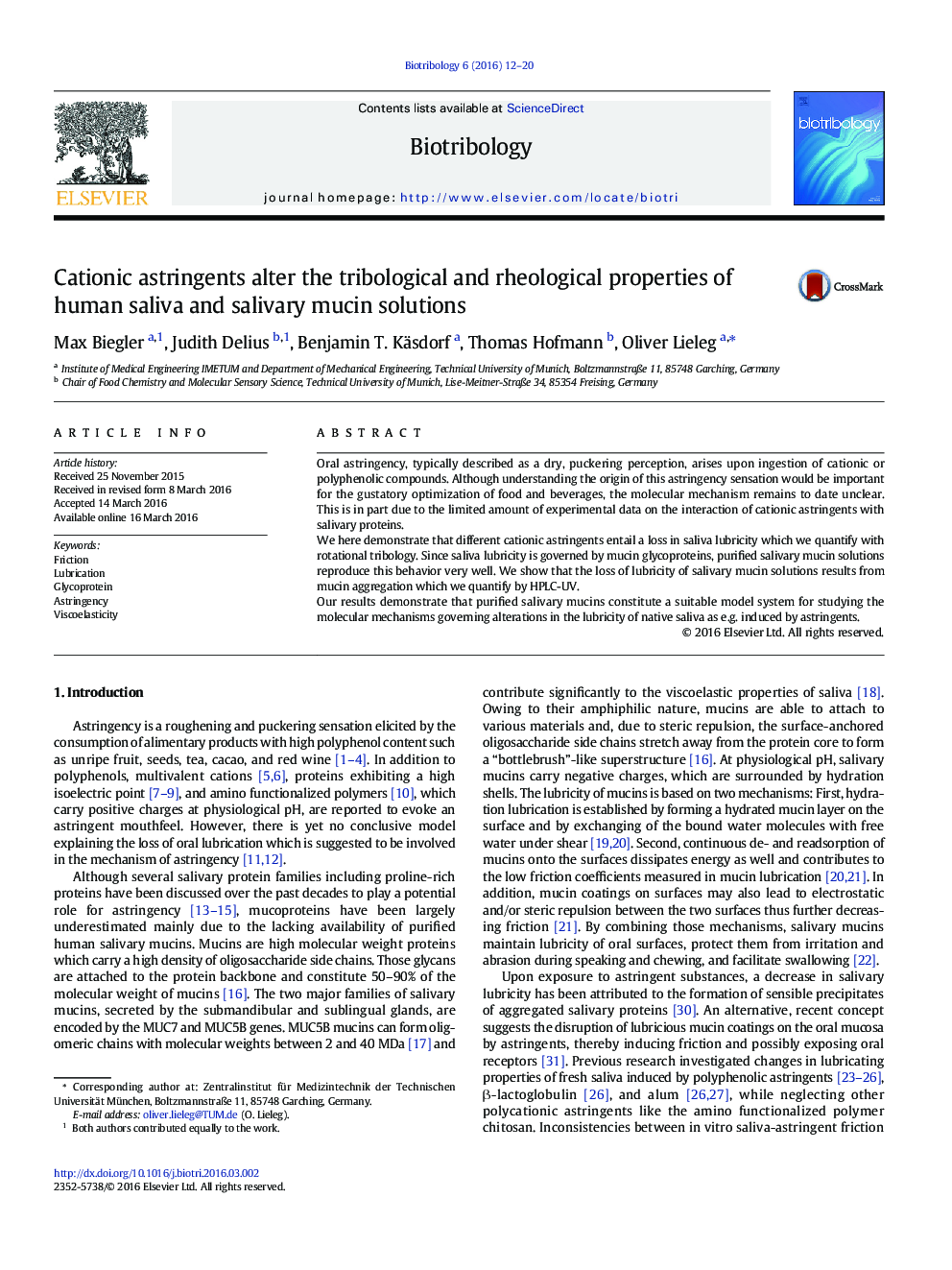| کد مقاله | کد نشریه | سال انتشار | مقاله انگلیسی | نسخه تمام متن |
|---|---|---|---|---|
| 757152 | 1462452 | 2016 | 9 صفحه PDF | دانلود رایگان |

• Solutions of salivary mucins reproduce the lubricating properties of saliva very well.
• Cationic astringents entail a loss in saliva lubricity in vitro.
• Loss of lubricity of salivary mucin solutions results from mucin aggregation.
Oral astringency, typically described as a dry, puckering perception, arises upon ingestion of cationic or polyphenolic compounds. Although understanding the origin of this astringency sensation would be important for the gustatory optimization of food and beverages, the molecular mechanism remains to date unclear. This is in part due to the limited amount of experimental data on the interaction of cationic astringents with salivary proteins.We here demonstrate that different cationic astringents entail a loss in saliva lubricity which we quantify with rotational tribology. Since saliva lubricity is governed by mucin glycoproteins, purified salivary mucin solutions reproduce this behavior very well. We show that the loss of lubricity of salivary mucin solutions results from mucin aggregation which we quantify by HPLC-UV.Our results demonstrate that purified salivary mucins constitute a suitable model system for studying the molecular mechanisms governing alterations in the lubricity of native saliva as e.g. induced by astringents.
Journal: Biotribology - Volume 6, June 2016, Pages 12–20